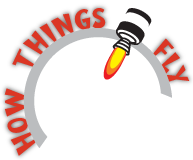Ask an Explainer
Q:
How is solid fuel used in propulsion?
A:
Once you ignite solid fuel with a spark, the solid fuel will begin to burn. As it burns, it produces hot, high pressure gasses that help create the thrust inside the engine.

Posted on February 11, 2014 at 7:25 pm
Categories:
